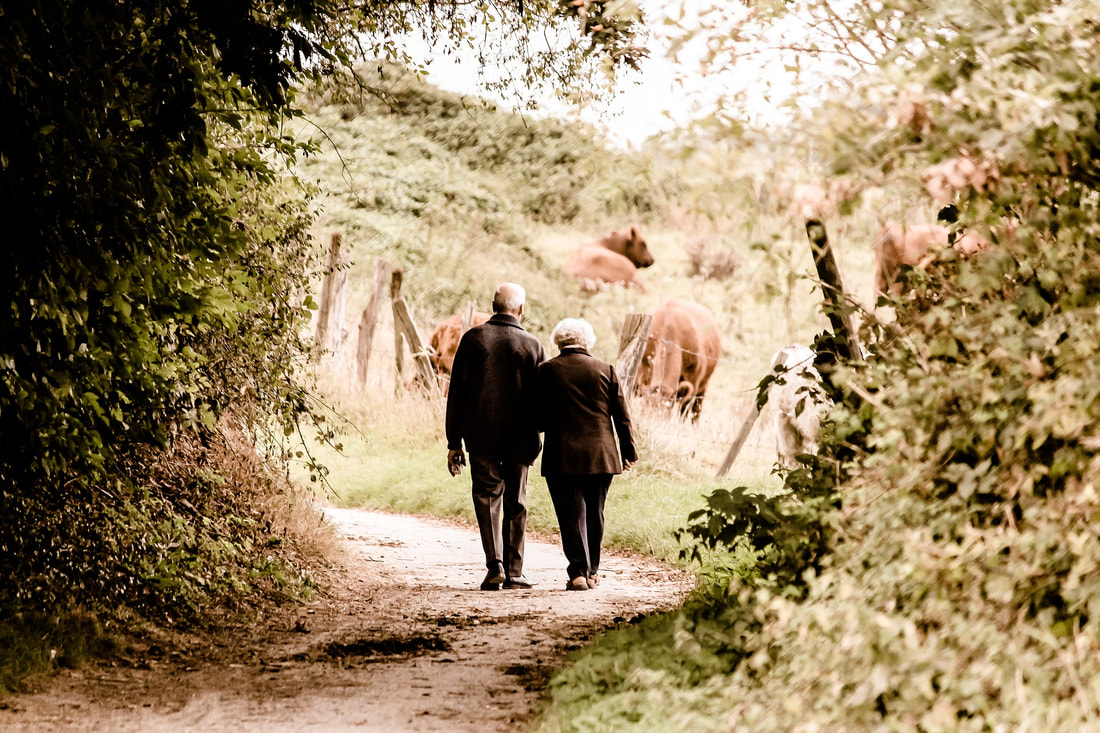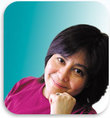 Image by Susanne Pälmer from Pixabay Image by Susanne Pälmer from Pixabay No one wants to face the fact that our bodies change as we age. The gray hairs, wrinkles and sagging skin under the arm remind us of the aging process. We can expect certain physiological changes that may influence how far we can push our bodies with exercise or even regular physical activity. Some normal changes that occur with aging include the fact that our lean muscle mass decreases and our fat mass increases. The water in our connective tissue decreases. There are more cross links in our connective tissue. Our mid spine starts to hump and we lose fast twitch muscle fibers. Our maximum heart rate decreases as does our ability to do aerobic exercise. Our heart chambers get stiffer and our reaction time decreases. We have more systemic inflammation and our hormones decline. These changes mean that we have an increased risk for diabetes. We lose flexibility and the ability to absorb shock. There is a greater tendency for tendon injury and decreased muscle endurance and output. We start to look like a hunchback and have decreased reach. We lose muscle speed. We can’t do as much cardio exercise. We have increased blood pressure, an increased risk for falling, more muscle wasting and loss of strength. This all starts when we reach 30 years of age. We start to lose strength at a rate of 10% per decade of life and this accelerates to 15-30% per decade after the age of 60. The earlier in life that we train and build up strength, the less functional loss we will experience as we get older. For example, if at age 20 you train so you can lift 100 pounds with one arm, you might lose 10% per decade from age 30-50 and then an additional 30% during the 60’s, making a total of 60% loss. By the time you reach 70, you would only be able to lift 30 pounds. Losing leg strength may be more significant since it may impact the ability to walk at age 70. This may explain why some people develop rotator cuff injuries even when they have continued to do the same exercise routine with no increase in weight, repetition or speed. The body has changed so the exercise becomes different and the risks may go up. Change your exercise regime from time to time and pay attention to the signals your body gives you. Watch for signs of increased effort, more fatigue, strain, soreness, shaking and other indicators that you are reaching your limit. Don’t assume that you should be able to do it as you always have. Longer warm-ups may be necessary. Fewer repetitions could be safer. Lowering the weight might be indicated. Being aware of the normal changes that occur in our bodies as we get older may help you to prevent injuries and to insure that you continue to stay active and functioning well into the later years. Start now to build up your reserves and don’t ignore the cues your body gives you.
0 Comments
 도훈 이 도훈 이 My mom always told me to sit up and stand up straight. At school, girls walked with a book on their head to practice good posture. Now, after many years of working as a physical therapist, I realize my mother’s wisdom in emphasizing good posture. Many of my patients hate to hear these words because they bring up a very negative emotional response. Unfortunately, their mothers nagged them with the same words I am now using when I have them stand with their backs against the wall, trying to keep their buttocks, upper back and head lined up. Most of them cannot keep their heads against the wall, and even if I use a rolled up towel they can’t push the roll into the wall. Their chins point upward as their necks extend towards the wall with a hunchback look. Not only does this make you look old, but it reduces your balance, decreases how much air gets into your lungs, causes neck and back pain, shoulder limitations, and possibly even jaw disorders. There is a growing problem in the younger community with reliance on cell phones, tablets, and laptops, and even with students’ writing postures. There should be more emphasis on sitting up straight, angling writing surfaces similar to drafting tables, and using larger arm muscles to write in order to prevent fatigue. Using whole body mechanics is more efficient and aesthetically pleasing and results in more beautiful handwriting. I also advocate keeping both feet on the floor for good pelvic alignment, which also prevents high blood pressure, according to my Chinese medicine teacher. When you sit or stand up straight, try to align your ears with the shoulders. The shoulders should line up with the hips which, if you are standing, should line up with the ankles from a side profile. Start looking at people and see how much their heads go forward. Even a small distance forward can put a big increase in pressure in your lower back disks. Gravity will pull a forward head down, causing more effort by the neck muscles to keep the head from falling forward. This can explain constant soreness and hardness in many people’s neck and shoulders. When the head is aligned and balanced on the neck, almost no muscle power is needed to keep the head perched on the spine. It takes about 21 days of constant awareness to change a habit, but if you stick with it, you will be rewarded with better health, younger appearance and better organ function. If you are still responsible for the welfare of children, encourage them to stand up and sit up straight, but please, do it in a way that makes them want to do it for a lifetime. If you are already grown up and have a forward head, don’t despair, many of my patients are doing better! It takes a little work and encouragement but, under the guidance of a good coach, it is well worth the effort. Sheila Yonemoto, P.T., has been a physical therapist for more than 30 years, specializing in integrative manual therapy, utilizing a holistic approach. She can be reached at Yonemoto Physical Therapy, 55 S. Raymond Ave, Suite 100, Alhambra, CA 91801. Sheila also offers a Qigong “Chinese Energy” exercise class. Your first class is FREE. Call (626) 576-0591 for more information.
 Brooke Cagle Brooke Cagle Recently I attended a physical therapy seminar focusing on core/trunk stability and was shocked to find that a young, trim, healthy looking woman, who also happened to be a physical therapist, had a very unstable core and back pain. I have also heard of situations with young girls playing very competitive soccer having weak and unstable core muscles. I was dismayed to learn that in 3-4 years, female soccer players have a high percentage of knee injuries. I now feel very strongly that soccer for females should be banned, unless something is done to stop the progression of knee injuries in young girls. The current culture of using cell phones, tablets, video games, backpacks and other sedentary activities also contributes to poor posture, muscle weakness, muscle imbalances and early onset of arthritis, pain and nerve entrapment. What happened to all the moms and teachers who insisted on sitting up straight, and encouraged getting out and moving? I am seeing 30 year-olds with very slumped postures, having arm pain, jaw pain, neck pain, back pain and headaches. My optometrist mentioned to me that there is a direct correlation between eye strain and poor trunk tone, strength and posture, due to lack of activity, which often affects a child’s ability to learn. It’s harder to focus the eyes when the trunk can’t stay stable for long periods of time, which is what it is supposed to do, which makes reading more difficult and, ultimately, learning becomes harder. If this problem affects a young, relatively healthy and more active population, trunk or core instability probably affects many mature adults as well. This can contribute to balance problems, breathing difficulties, incontinence and lower energy levels. The good news is that something can be done about it. It might take a little work to bring awareness to the muscles that are responsible for keeping us upright, but it will result in using smaller amounts of energy and decreasing degenerative changes in joints. Physical therapists are experts in observing posture and movement and can guide people in getting stronger, moving around more efficiently and decreasing wear and tear on the body. Exercise classes are great for this as well, and getting a customized program to address specific problems is one way to make sure that imbalances are corrected first. Gym classes often focus on the larger movement muscles of the trunk and don’t pay attention to the smaller and less visible postural muscles that work most of the time. Moms used to say “stand up straight” and sometimes it turned into nagging that left emotional scars. I have to say, mom was right. Instead of rebelling against standing up straight, switch your thinking to developing a good stable core. You will have more energy, look younger, have better balance and may reduce a lot of strain on your knees and your eyes. Mercury Toxicity and How It Affects Energy, Nervous System and Cholesterol by Sheila Yonemoto, PT5/29/2014  Image by Pete Linforth from Pixabay Image by Pete Linforth from Pixabay Dr. Chris Shade outlined the basics of mercury toxicity and what can be done to remedy the problem. It is my hope that I can condense his wonderful knowledge into a concise, understandable and usable format without getting too technical. Mercury toxicity presents a problem in the body because it is more binding than other metals. It never exists as a free ion and attaches itself to enzymes in the body making them inactive. It is a billion times more attaching than zinc and will bind to cell membranes including the vasculature, causing holes in arteries and triggering cholesterol production to spackle these holes. Messing with enzymes messes up the body chemistry and can cause depression, anxiety, hyperactivity, chronic fatigue and other neurological conditions. Mercury toxicity can come from coal burning, dental amalgams, vaccines, fish consumption and flu shots. Fish get loaded with mercury from coal burning fertilizing the air with mercury, which then falls to the oceans as acid rain. There are several forms of mercury toxicity with ethyl mercury being the most toxic followed by methyl mercury, as these penetrate quickly into the body. Inorganic mercury from dental amalgams, aka silver fillings, are very slow to break out. Seventy-eight percent of people have amalgams and 50% of dentists do not use amalgams. There are several ways to test for mercury toxicity. Urine tests show more inorganic mercury, such as from paint. Blood tests do not make much sense for elemental mercury vapors. Hair analysis is a good marker for methyl mercury in blood but not good for inorganic sources such as dental. Testing from various labs can differ considerably. Some tests are 50 times more sensitive than others. People with numerous dental amalgams who do not eat fish will show low mercury in the blood. People who are sickest from mercury will show lower mercury in urine because problems with the kidneys will not let mercury pass into the urine. How well you excrete mercury makes a difference in the tests. Inorganic sources, i.e. dental, are more toxic but do not accumulate well in tissues, while the organic/fish sources accumulate more. Detoxification from mercury should be done slowly, often over a period of several years, requiring several rounds of detoxification along with lifestyle changes. Some ways to consider eliminating the hazards of mercury toxicity include chelation and removal of dental amalgams which should be done under the care of experts. Other lifestyle changes that can be employed even without the benefit of testing include adding the following items to your diet: vitamin C, chlorella, N-acetyl cysteine, garlic, lipoic acid, CoQ10, astaxanthin and other powerful antioxidants, plus cruciferous vegetables such as broccoli or cabbage and also whey protein, but be sure they contain no hormones or BHT. Eating a diet high in antioxidants and low in carbohydrates emphasizing good quality proteins and good fats is highly recommended. I have found a detox diet kit that is great for helping rid the body of heavy metals, although any fasting diet will help. |
Sheila’s BlogI focus on the topics you care about most. Categories
All
Archives
February 2022
|
|
55 S. Raymond Ave. Suite 100
Alhambra, CA 91801 Main Phone: (626) 576-0591 Alternate Phone: (626) 538-3966 Fax: (626) 576-5890 Email: yonemotoptfinance@gmail.com |
© 2015 Yonemoto Physical Therapy. ALL RIGHTS RESERVED.
|



 RSS Feed
RSS Feed